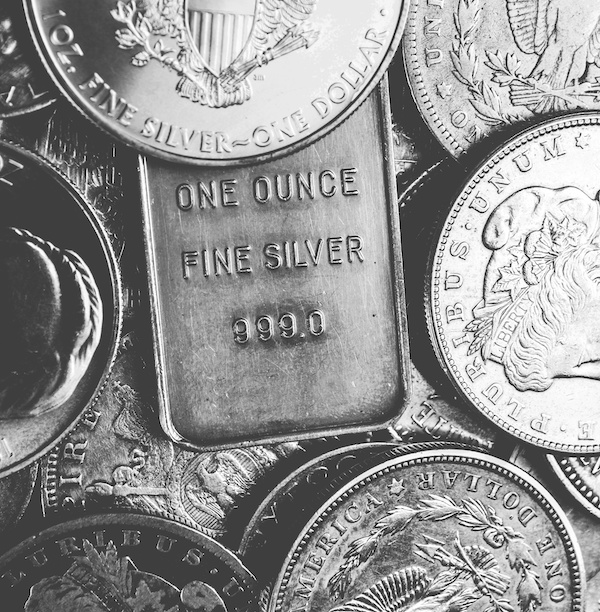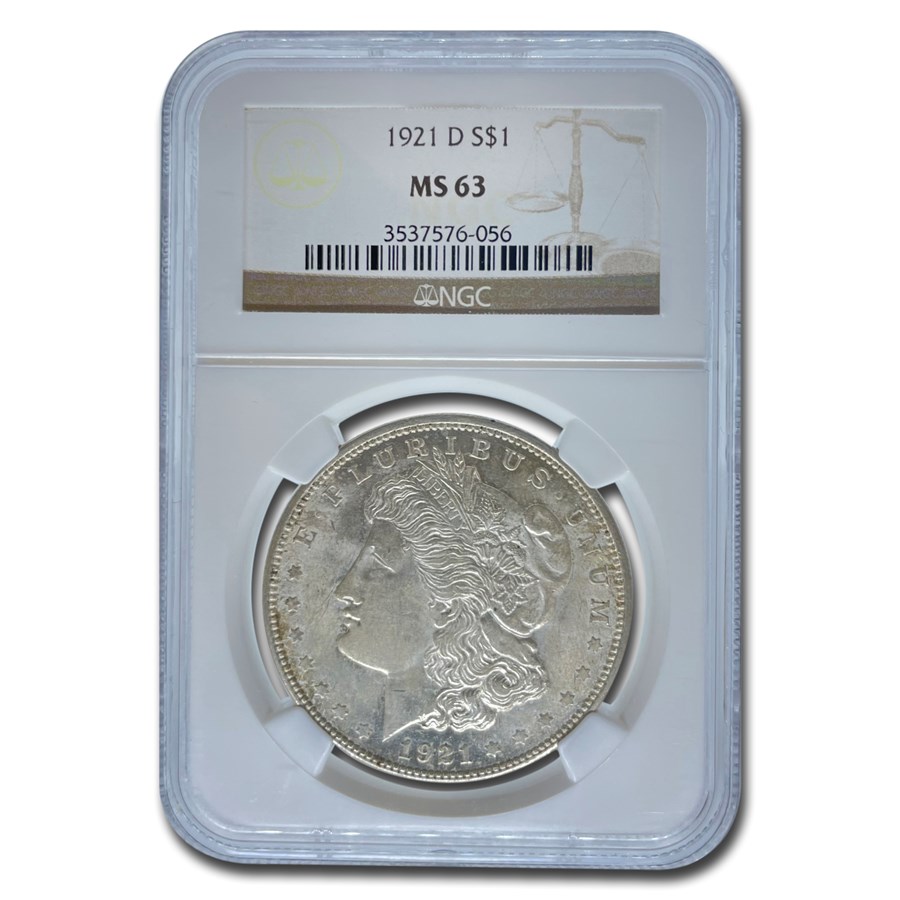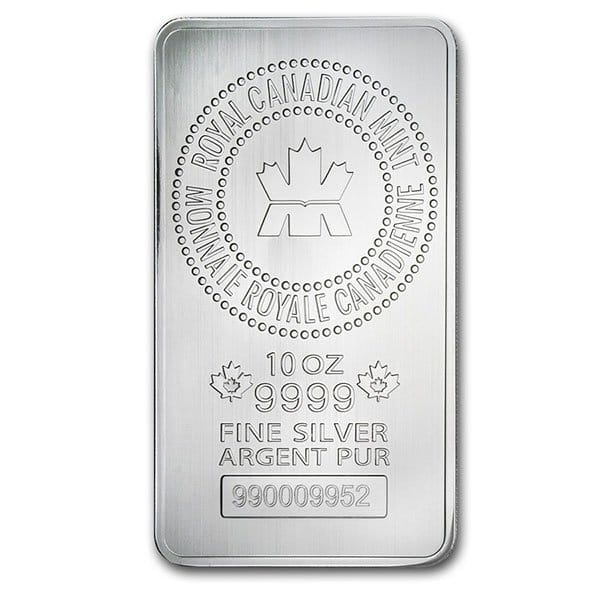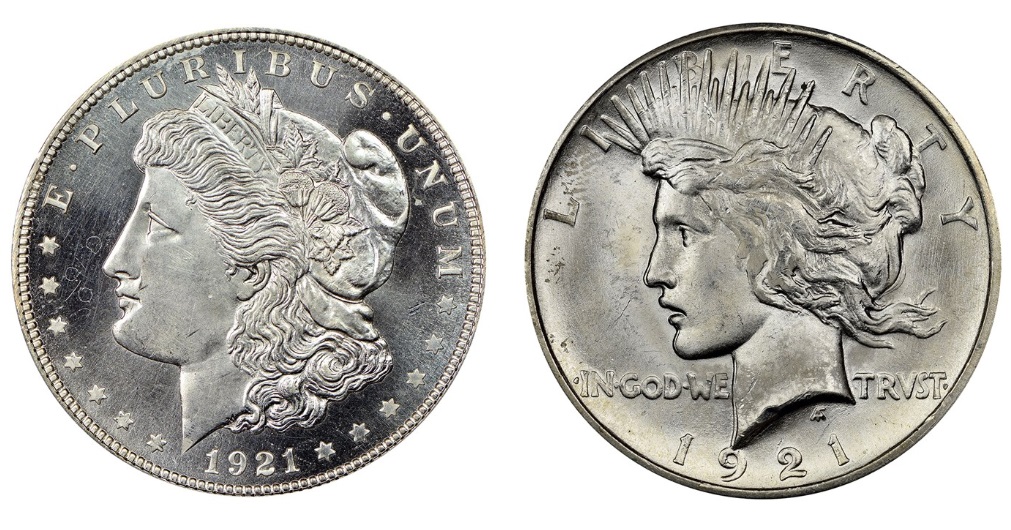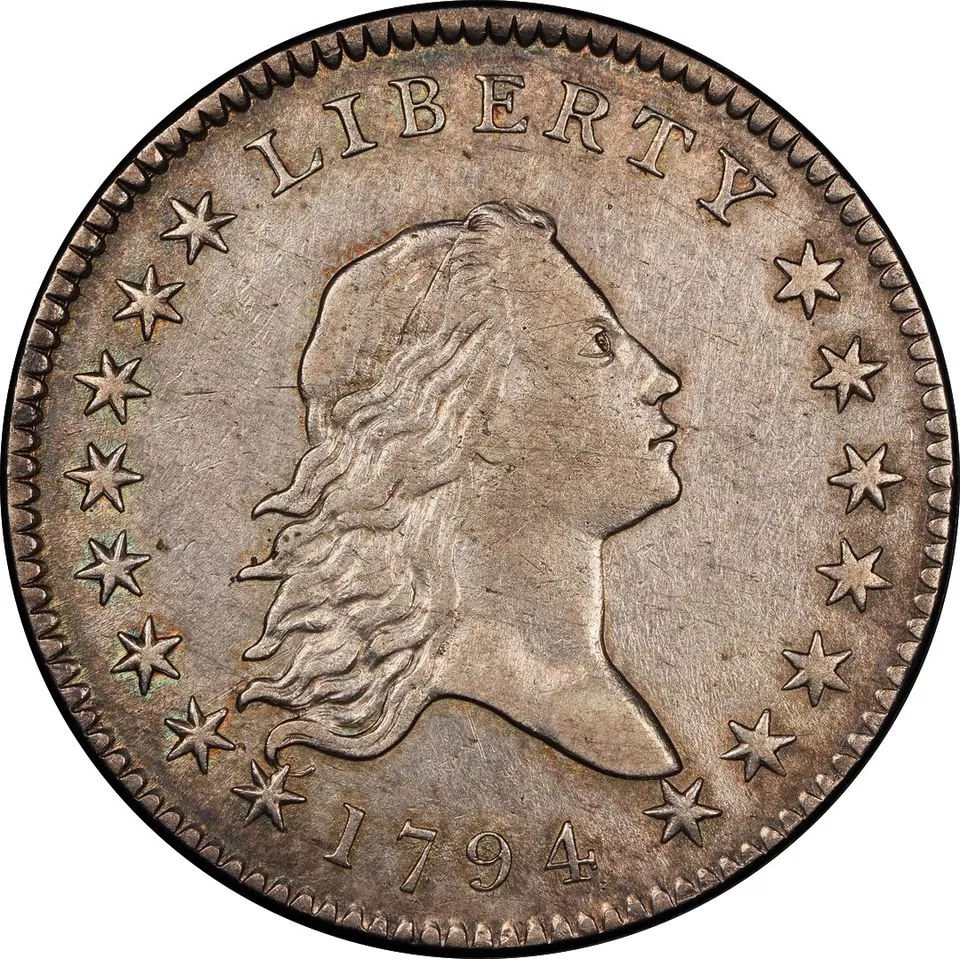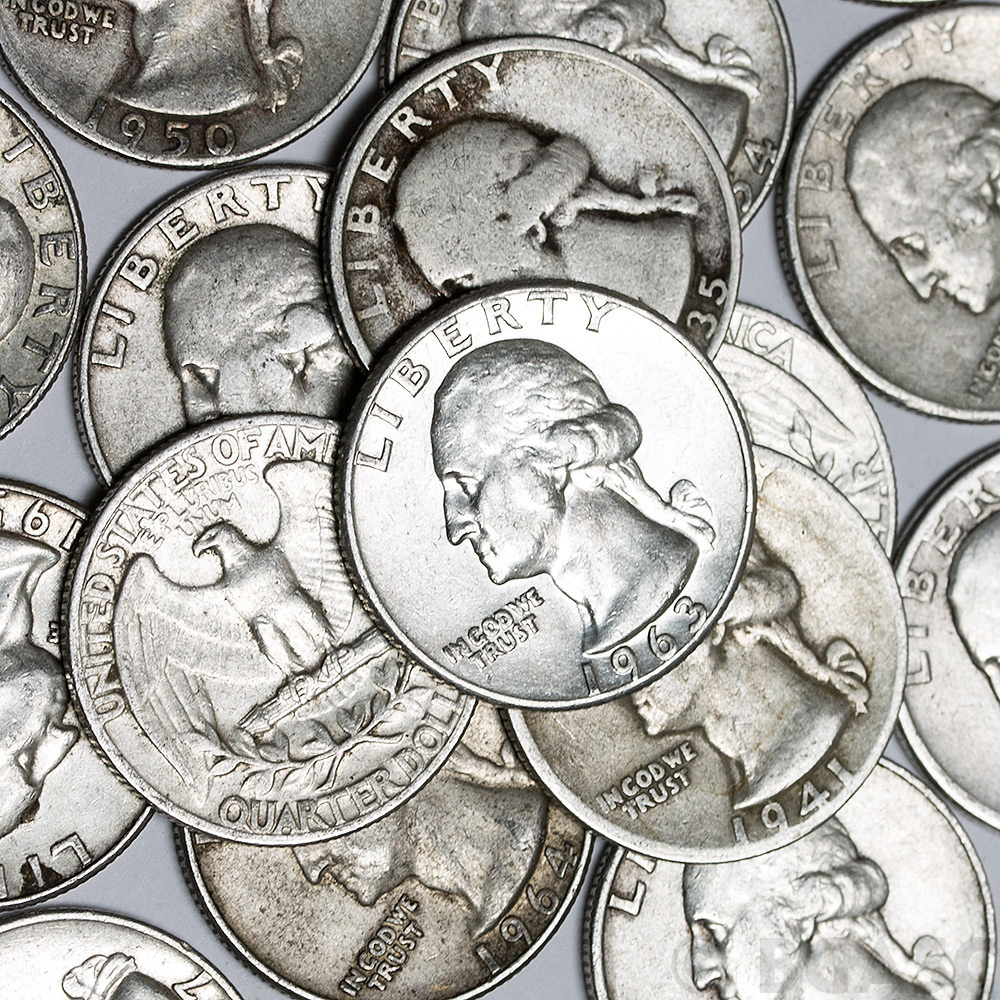The Barber Half Dollar is a U.S. silver coin from 1892 to 1915. Designed by Chief Engraver Charles E. Barber, it replaced the Seated Liberty design and became one of three denominations (along with the dime and quarter) to feature Barber’s artwork.
By the late 19th century, the U.S. Mint sought to replace the long-standing Seated Liberty design, which had been in use since the 1830s. An open competition was initially proposed but failed to produce satisfactory designs.
Charles E. Barber, the Chief Engraver of the U.S. Mint, was ultimately tasked with creating the new designs for the dime, quarter, and half dollar. Barber’s designs were practical and functional for mass production, though the public criticized them for lacking artistic innovation.
The Barber Half Dollar debuted in 1892 and remained in production until 1915, when the Walking Liberty design debuted.
Barber Half Dollar Key Dates
What Makes a Key Date?
Key dates in the Barber Half Dollar series are coins with notably low mintages, poor survival rates in collectible grades, or intense collector demand due to historical factors. Most were struck at branch mints (San Francisco and New Orleans) and had limited distribution or heavy circulation, meaning few survive in high grades.
Here’s why these coins are so sought-after:
- 1892-S: This is the ultimate “king” of the series. With only 990,710 struck—and most heavily worn or lost—the 1892-S is incredibly rare in any grade above Good. Even low-grade coins command a strong premium, and high-grade survivors are true trophy coins for advanced collections.
- 1893-S: Another low-mintage San Francisco issue with few known survivors in decent condition. It’s tough to find even in Fine, and anything Very Fine or higher is a major collector prize.
- 1896-O & 1897-O: Both are notorious for abysmal strike quality and brutal circulation in the South. Uncirculated examples are extremely rare, and even mid-grade coins are highly desirable.
- 1896-S, 1901-S, 1904-S: All are low-mintage San Francisco issues that were largely overlooked by collectors at the time of issue. Most were heavily used, so original coins in Fine or better are elusive and consistently in demand.
- 1913: The last Philadelphia “key” date, the 1913 was minted in small quantities during the waning years of the series. While more affordable than the rarest O- and S-mints, it’s still a must-have for a complete set.
Why Collectors Care:
These key dates set the benchmark for collecting Barber Halves. These coins are rare and essential for anyone building a serious set. Key dates command the strongest premiums across all grades. Demand is always highest for coins with original surfaces, no cleaning, and solid eye
Barber Half Dollar Value Chart
The table below shows approximate value ranges for key date Barber half dollar values in various conditions. These values are estimates based on market data, and actual prices can vary depending on the coin’s specific condition, market demand, and other factors. For the most accurate and current values, consult a recent Greysheet price guide or a professional numismatist.
| Date/Mint Mark | Good (G4) | Very Good (VG8) | Fine (F12) | Very Fine (VF20) | Extremely Fine (EF40) | About Unc. (AU50) | Mint State 60 (MS60) |
|---|---|---|---|---|---|---|---|
| 1892-S | $230 | $350 | $600 | $1,100 | $2,100 | $5,500 | $12,500 |
| 1893-S | $140 | $210 | $350 | $600 | $1,200 | $3,000 | $7,500 |
| 1896-O | $310 | $450 | $750 | $1,300 | $2,800 | $6,000 | $13,000 |
| 1896-S | $225 | $350 | $600 | $1,100 | $2,300 | $5,500 | $12,000 |
| 1897-O | $150 | $225 | $400 | $850 | $1,700 | $3,800 | $8,000 |
| 1901-S | $325 | $425 | $800 | $1,400 | $2,800 | $6,200 | $15,000 |
| 1904-S | $185 | $250 | $400 | $700 | $1,600 | $3,600 | $7,500 |
| 1913 | $125 | $175 | $250 | $400 | $900 | $2,000 | $4,500 |
1892 Barber Half Dollar
The 1892 Barber Half Dollar, the first year of the series, was minted at three locations: Philadelphia (no mint mark), New Orleans (O), and San Francisco (S).
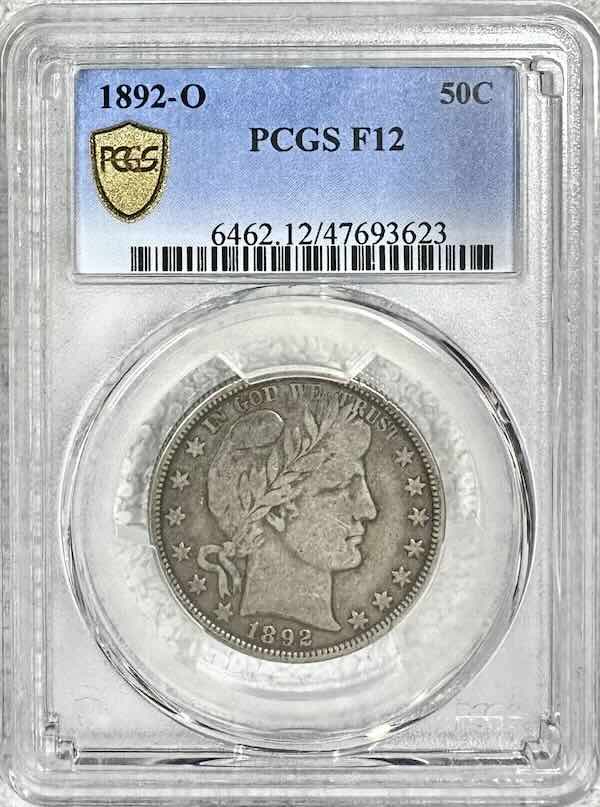
Value: $650 to $800
Below is the mintage breakdown:
| Mint Location | Mintage |
|---|---|
| Philadelphia | 934,000 |
| New Orleans (O) | 390,000 |
| San Francisco (S) | 1,029,028 |
| Total Mintage | 2,353,028 |
The 1892 Barber Half Dollar from the San Francisco Mint (S) had the highest mintage, while the New Orleans (O) issue had the lowest. All three coins are collectible, with well-preserved examples, especially from New Orleans, being particularly desirable.
1892 Barber Half Dollar Value
| Mint | G-4 (Good) | F-12 (Fine) | VF-20 | XF-40 | AU-50 | MS-63 |
|---|---|---|---|---|---|---|
| Philadelphia (No Mintmark) | $55 | $85 | $140 | $300 | $600 | $1,100 |
| New Orleans (O) | $100 | $250 | $525 | $1,000 | $2,300 | $5,500 |
| San Francisco (S) | $55 | $90 | $160 | $320 | $700 | $1,200 |
Philadelphia (No Mintmark)
The Philadelphia issue saw a substantial mintage (935,245) and is relatively accessible in low grades. Common as a “type coin,” so demand and price are moderate for well-worn examples.
Prices increase sharply as original detail is scarcer—most Philly coins entered circulation and stayed there. Well-detailed mid-grade coins are noticeably tougher to find, pushing up prices.
Choice, uncirculated examples are always in demand. Certified high-grade coins fetch strong premiums due to collector competition for registry sets and high-quality type coins.
New Orleans (O)
The 1892-O is a recognized semi-key. With the lowest mintage of the three (390,000), even heavily worn coins bring a premium. Low-grade survivors are in strong demand.
Mid- and high-grade 1892-O halves are genuinely rare. Most O-mint halves circulated hard in the South and Gulf states, so anything above Fine is hotly pursued by collectors.
In About Uncirculated and especially Mint State, 1892-O halves are trophy coins—major auction highlights with intense bidding. Very few survive with original luster and minimal marks, justifying four-figure price tags.
San Francisco (S)
The S-mint had the highest mintage (1,029,028) and is the most available in circulated grades. Prices are only modestly higher than the Philly issue due to stronger demand from S-mint and West Coast collectors.
Like the Philadelphia, nice mid-grade coins get much scarcer, and premiums rise for crisp detail and problem-free surfaces.
Low mintage of just 1,029,028 coins. Highly valued, especially in higher grades.
Barber Half Dollar Conditions
Mint State Condition
A Mint State (MS) Barber Half Dollar is a visually striking coin that retains its uncirculated appearance and will feature a radiant and reflective luster. Liberty’s hair and cap details are sharp and well-defined, while the eagle’s feathers on the reverse are struck with fine detail, showcasing intricate craftsmanship.
The coin’s surface exhibits virtually no wear, though minor bag marks or slight imperfections may be present, depending on the specific Mint State grade (ranging from MS-60 to MS-70). These minor flaws are typical and do not detract significantly from the coin’s overall quality.
A well-struck Barber Half Dollar in Mint State condition commands a premium due to its exceptional eye appeal and the rarity of such well-preserved examples. These coins are highly desirable among collectors who value their historical significance and pristine condition.
Fine Condition
A Fine (F-12) Barber Half Dollar shows moderate wear, particularly on the high points of the design, such as Liberty’s cheek and hairline. While the coin’s details lack sharpness, the essential elements of Liberty’s portrait and the eagle on the reverse remain visible.
The inscriptions and rims are clear and readable, maintaining the coin’s integrity despite its circulated condition. However, the surface lacks the original luster typically seen in higher grades and may exhibit slight discoloration or toning resulting from its time in circulation.
Despite these signs of wear, a Fine condition Barber Half Dollar retains significant historical and collectible value, appealing to those seeking an affordable piece of U.S. numismatic history.
90% Silver Barber Half Dollars
Barber Half Dollar junk silver coins are typically heavily worn due to extensive circulation.
These coins fall into lower-grade categories, often Good (G-4) or About Good (AG-3), whose focus is primarily on their silver content rather than numismatic value.
The coin’s surface often exhibits significant discoloration or toning due to oxidation and wear, which is common in circulated silver coins. Each Barber Half Dollar weighs 12.5 grams, with 90% of that weight in silver. The pure silver content is 0.36169 troy ounces per coin and makes each Half Dollar worth $13.71.
Junk Barber Half Dollars often carry a slight premium over their melt value due to demand for pre-1965 U.S. silver coins. The premium may vary depending on market conditions, with higher premiums during increased demand for physical silver.
Barber Half Dollar Coin Grades
| Grade | Description |
|---|---|
| Good (G4) | Coin’s design is heavily worn but major details are still visible. |
| Very Good (VG8) | Moderate wear with the main features clear. |
| Fine (F12) | Moderate to considerable even wear, all major features are sharp. |
| Very Fine (VF20) | Light to moderate wear on high points, all details are clear. |
| Extremely Fine (EF40) | Very light wear on the highest points, with nearly full details. |
| About Uncirculated (AU50) | Traces of wear on the highest points, luster may be diminishing. |
| Mint State (MS60 – MS65) | No signs of wear, with MS65 being a higher quality strike and better eye appeal than MS60. |
Tips for Collectors and Investors
- Authentication: Due to the high value of these coins, ensure they are authenticated and graded by reputable third-party grading services like PCGS or NGC.
- Condition Rarity: The value increases significantly with higher grades. Coins in Mint State conditions are much rarer and more valuable.
- Market Fluctuations: Coin values can fluctuate based on silver prices, collector demand, and market trends.
- Historical Significance: Key date Barber half dollars are not only valuable but also represent important pieces of U.S. numismatic history.
1893-S
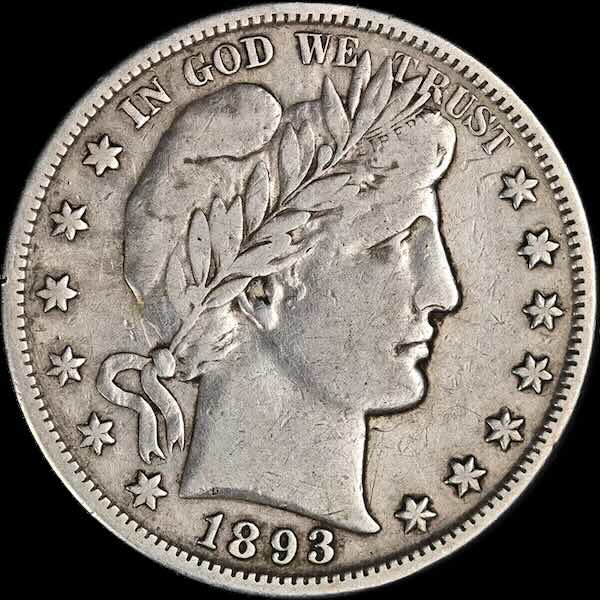
Lower mintage makes this coin valuable, especially in uncirculated conditions.
Very low mintage of 740,000 coins. Considered rare across most grades.
1896-O and 1896-S
Both have low mintages and are key dates, highly sought after by collectors.
1897-O
Known for being difficult to find in higher grades due to extensive circulation.
Minted in New Orleans with only 632,000 coins struck.Rare in all conditions.
1901-S Barber Half
Scarce in all grades, with uncirculated coins commanding significant premiums.
Extremely low mintage of 847,044 coins.Among the most challenging Barber Half Dollars to find in Mint State condition.
1904-S Half Dollar
Another low-mintage coin that is rare in higher grades.
1913 Barber Half Dollar
One of the lowest mintages in the series, making it valuable across all conditions.
The lowest mintage in the entire series: 604,000 coins. Rare and expensive in any grade, particularly Mint State.
Final Thoughts
Collecting key date Barber half dollars can be a rewarding endeavor, both financially and historically. These coins offer a glimpse into the past and can be a solid addition to a diversified tangible asset portfolio. Always conduct thorough research or consult with a professional numismatist when buying or selling high-value coins.
